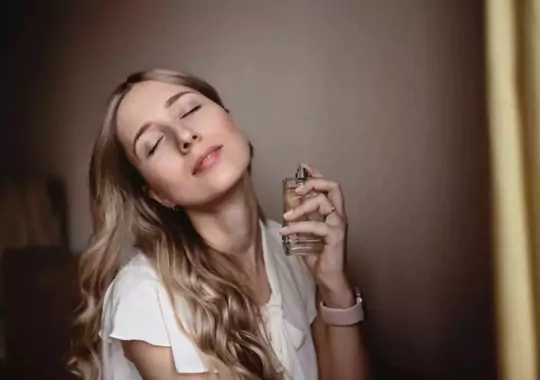Perfume, often regarded as an art form, is deeply rooted in the intricate world of chemistry and biology. The science of perfume delves into the complex interactions of various aromatic compounds, their molecular structures, and how they stimulate our olfactory senses. Understanding the science behind perfume involves exploring the composition of fragrances and the psychology of smell perception.
As Amazon affiliates we may earn a commission if you purchase a product at no cost to you.
Ancient Roots and Evolution
Perfume has deeply rooted origins tracing back to ancient civilizations, particularly Ancient Egypt, where fragrances held profound cultural significance. In this ancient society, perfumes were not only used for personal adornment but also played a vital role in religious rituals and ceremonies. Egyptians valued scents highly, believing they could connect the mortal with the divine.
The art of perfume-making continued to evolve through the ages, spreading to civilizations like Mesopotamia, the Indus Valley, and China. Each culture brought its unique blend of aromatic ingredients and techniques, enriching the global tapestry of perfumery.
However, it was in the 18th century that perfumery underwent a significant transformation. Figures like Louis the 15th of France played a pivotal role in elevating perfumes from mere commodities to objects of luxury and prestige. The French court became a hub of perfume culture, where perfumers concocted exclusive scents for nobility and aristocrats.
Louis the 15th's endorsement of perfumes contributed to their widespread popularity among the elite, shaping the industry's trajectory for centuries to come. Perfumery became synonymous with sophistication and refinement, marking a new era of innovation and commercialization in the fragrance world.
This historical evolution laid the groundwork for modern perfumery, blending ancient traditions with contemporary techniques to create a diverse array of scents that captivate the senses and evoke emotions.
Revolutionary Discoveries
William Perkins' groundbreaking discovery in 1868 marked a pivotal moment in the history of perfumery. His synthesis of fragrances revolutionized the industry, leading to the creation of synthetic molecules that forever changed the landscape of perfumery.
Perkins' breakthrough enabled the production of coumarin, a compound found naturally in tonka beans, on an industrial scale. Coumarin's sweet and pleasant aroma resembled that of freshly mown hay, making it a desirable ingredient in perfumes.
The availability of synthetic coumarin allowed perfumers to craft scents with longer-lasting effects and a consistent aroma profile. Moreover, it facilitated mass production, making fragrances more accessible to a broader audience.
Perkins' contributions not only transformed perfumery but also had far-reaching implications across various industries. His pioneering work laid the foundation for the modern chemical industry, demonstrating the potential of synthetic organic chemistry to revolutionize manufacturing processes.
Today, synthetic molecules continue to play a crucial role in perfumery, offering an extensive palette of scents and enhancing the artistry of fragrance creation.

Artistry of Perfumers
Perfumers, commonly known as "noses," employ a delicate balance of artistic creativity and scientific expertise in their craft. Their role involves the meticulous blending of synthetic molecules to create fragrances that evoke specific emotions and memories.
Similar to a musical composition, perfumes are structured with three layers of scent notes: top, middle, and base. The top notes provide the initial impression and are typically the first scents perceived upon application. Middle notes form the heart of the fragrance, giving it character and depth. Base notes, often richer and longer-lasting, anchor the scent and contribute to its overall longevity.
Perfumers possess an intimate understanding of the properties and interactions of various fragrance ingredients, allowing them to manipulate scent profiles and create harmonious blends. Their expertise lies in selecting the right combination of notes to achieve a desired olfactory experience, whether it's fresh and uplifting or warm and sensual.
The artistry of perfumers extends beyond mere scent creation; it involves storytelling and evoking emotions through fragrance. Their ability to translate abstract concepts and emotions into tangible scents is a testament to their creativity and skill. Check out the best perfumes on Amazon.
Versace Bright Crystal Eau de.
Daisy By Marc Jacobs for Women Eau De Toilette.
Chanel Coco Mademoiselle Eau de Parfum .
Understanding Olfactory Perception
Despite significant progress in perfume science, the process of how humans perceive scents remains enigmatic. Two main theories, the lock and key mechanism and the vibration theory, vie for explaining olfactory perception. Luca Turin's research advocates for the vibration theory, positing that molecular vibrations are pivotal in scent detection.
The mechanism underlying how humans perceive scents continues to baffle scientists, despite advancements in perfume science. Two competing theories, the lock and key mechanism and the vibration theory, attempt to elucidate olfactory perception. The lock and key mechanism propose that scent receptors recognize specific-shaped molecules, akin to a lock fitting a key.
Conversely, the vibration theory suggests that scent detection is attributed to molecular vibrations, regardless of molecular shape. Luca Turin's research lends support to the vibration theory, highlighting the importance of molecular vibrations in olfactory perception.

Challenges in Biological Explanation
The understanding of smell from a biological perspective remains elusive despite continuous research efforts. Scientists encounter difficulties in comprehending the intricate mechanisms underlying olfactory perception. This ongoing challenge emphasizes the necessity for continued exploration and discovery to unravel the complexities of the sense of smell.
Despite extensive research, the biological explanation of smell remains one of the least understood senses. Scientists face challenges in deciphering the intricate mechanisms of olfactory perception, highlighting the need for further exploration and discovery in this fascinating field.
Recommended Article

Frequently Asked Questions FAQs
What is the science behind perfume creation?
Perfume creation involves a blend of chemistry and artistry. Perfumers combine various aromatic compounds to create unique scents. The science lies in understanding the chemical composition of fragrances and how they interact to produce distinct olfactory experiences.
How does the science of perfume relate to neurobiology?
Neurobiology plays a crucial role in how we perceive and respond to fragrances. Our olfactory system processes scent molecules, triggering neurological signals that influence emotions and memories. Understanding this connection sheds light on the profound impact of perfumes on human behavior.
Can the science of perfume help in creating personalized fragrances?
Yes, advancements in perfume science enable the creation of personalized fragrances tailored to individual preferences. By analyzing factors like body chemistry and scent preferences, perfumers can craft bespoke scents that resonate with each person's unique olfactory profile.
Conclusion
Delving into the realm of perfumery unveils a captivating journey where artistry meets the intricate world of chemistry and biology. The science of perfume encompasses the study of aromatic compounds, their molecular structures, and their profound effects on human psychophysiological responses. Understanding how fragrances affect emotions, moods, and physiology empowers individuals to harness the power of scents for enhancing emotional well-being.










